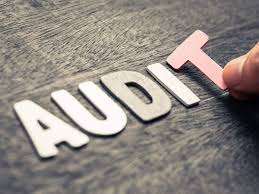Whether small scale or large scale, businesses conduct audit activities once a year. It depends on the management whether they want to conduct the audit activities more than once in a year or not. Some conduct these activities in the middle of the year or at the end of the year. The main aim of the audit activities is to keep a check on your organizational and business activities.
While conducting the audit activities, auditors and the management face certain audit risks; These risks arise due to the management’s incompetency and functions or the auditor’s inexperience.
The next few paragraphs in this article will help you understand audit risk types with some examples.
3 major audit risk types you must know
While conducting risks, there are chances that the audit activities themselves are prone to risks. These risks arise due to multiple factors and the negligence of the management and the auditor. Some audit risks are not in the auditor’s control; they are the fault of the management of the organization or a business. Some are merely auditors’ mistakes that increase the level of audit risks.
Below is a brief detail of each risk and entity behind these risks’ arousal with their examples.
Inherent risks
Inherent risks are risks that arise due to an organization’s internal team’s negligence and poor functioning. The external auditors are not involved in the birth of this type of audit risk. When the financial statements are misstated before an audit activity, it is called an inherent risk.
The inherent risk depends on the business’s nature, area of the business, environmental factors, climate changes and other related entities. It is impossible to eradicate this risk factor, but management needs to develop strategies to reduce the inherent risks.
One example of inherent risk is the high amount of cash transactions; the higher the cash transactions in an organization, the higher the chances of inherent risk.
Control risks
Control risk is also related to the functioning of the management. When the management or the organization has no internal control system to control an organization’s operations, then the control risks will be higher. The control risks are also higher even after having an internal control system. When the management neglects to look after the system’s implementation and functioning, the risks will still be higher.
One example of a weak internal control system is the mismanagement in recording employee detail, recording their daily attendance, etc. It means that the weaker the internal control system higher the control risks.
Detection risks
Detection risk involves the auditor. If the auditor fails to detect financial records’ misstatement, there arises a risk called detection risk. In the last two types of risks, the management was involved in the risks’ arousal, and the auditor was the person to assess those risks. If detection risks arise, then management will not assess them; rather, the auditor himself will assess those risks. To perform your audit activities without facing detection risks, hire top audit firms in Dubai to smoothly operate your audit activities.
There are multiple reasons due to which detection risks occur. Some of the reasons are as follows.
- The inexperience of the auditor
- Performing less substantive procedures
- Due to an increase in control and inherent risks
What are the ways to minimize audit risks?
Neither management nor the auditor can completely remove the audit risks, but certain factors can help reduce the audit risk levels. Below are a few factors that the management of an organization must consider to minimize the audit risks.
Assess risks and develop strategies
For minimizing the risks, it is necessary to assess those risks. The team, management and the authorities must conduct meetings and discuss the possible risks to find solutions to minimize them. Organizations usually conduct assessment activities at the end of the year; it is necessary to conduct the assessment activities throughout the year after certain intervals to identify the risks at an early stage.
Transparency of the management and team
The operations and the organizations’ activities must be transparent, and every entity must be familiar with the activities of the risk assessment meetings. The management must openly discuss the reports with the team and ask for their opinion to reduce the possible risks.
Develop effective communication channels
The executive members, stakeholders and the management must have an effective communication channel to discuss the risks and share feedback on the current risks. Communication makes your objectives clear and provides defined guidelines to the team and the auditors about your objectives and expectations.
It is important for the auditor to communicate because the more he knows, the better he can assess. Without communication, audit risks are always higher.
Why avoiding audit risks is compulsory?
It is necessary for any organization or business to avoid audit risks because failure to avoid audit risks will lead to failure of the organization’s growth and progress. To help minimize such audit risks, you may need to consult experts to assess the audit risks. To avoid audit risks of your organization or business, hire top audit firms in Dubai and conduct audit activities to improve your business’s operations.
